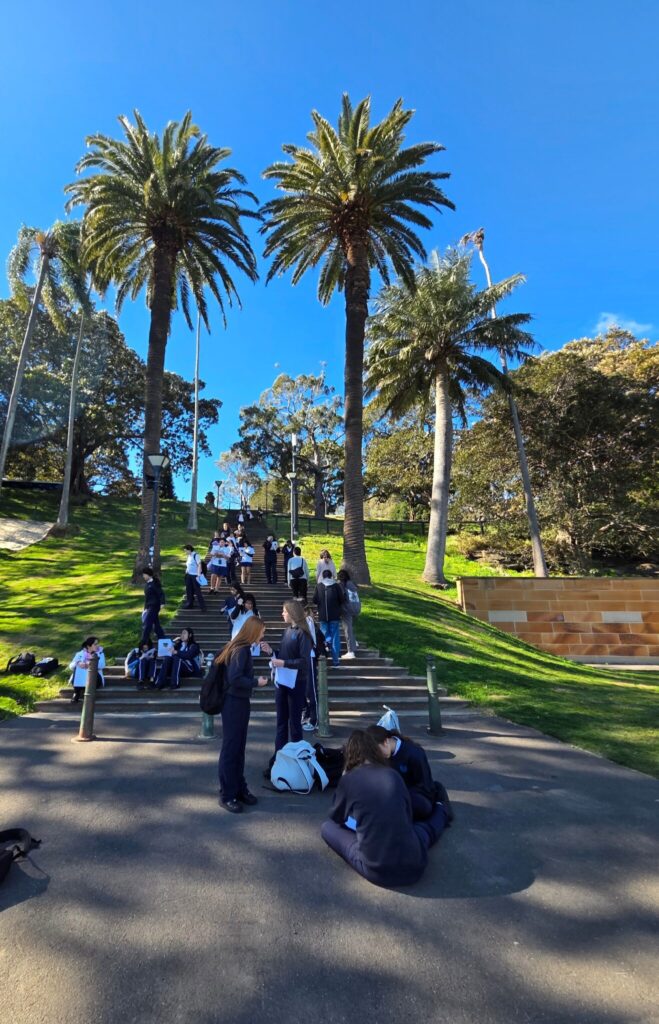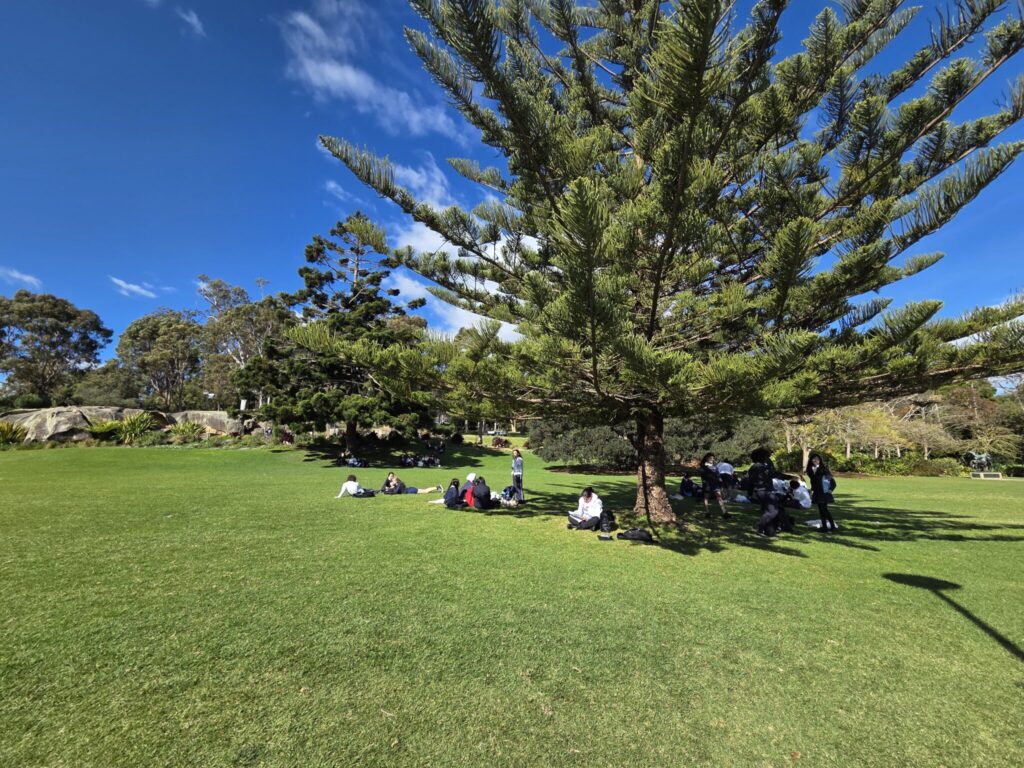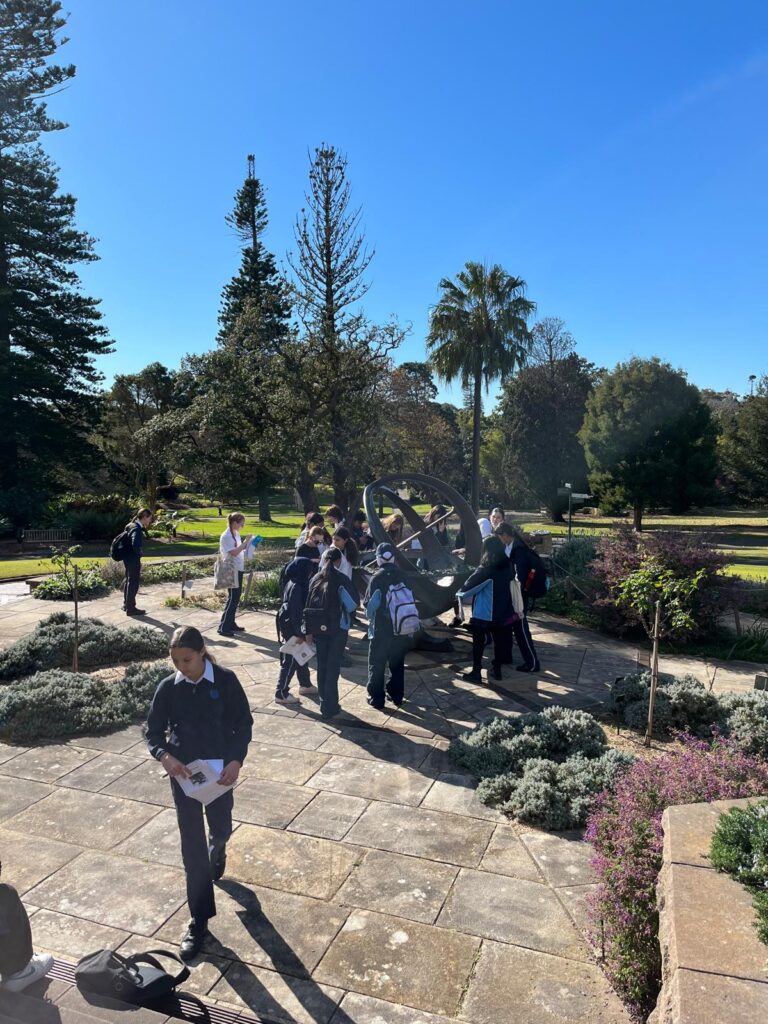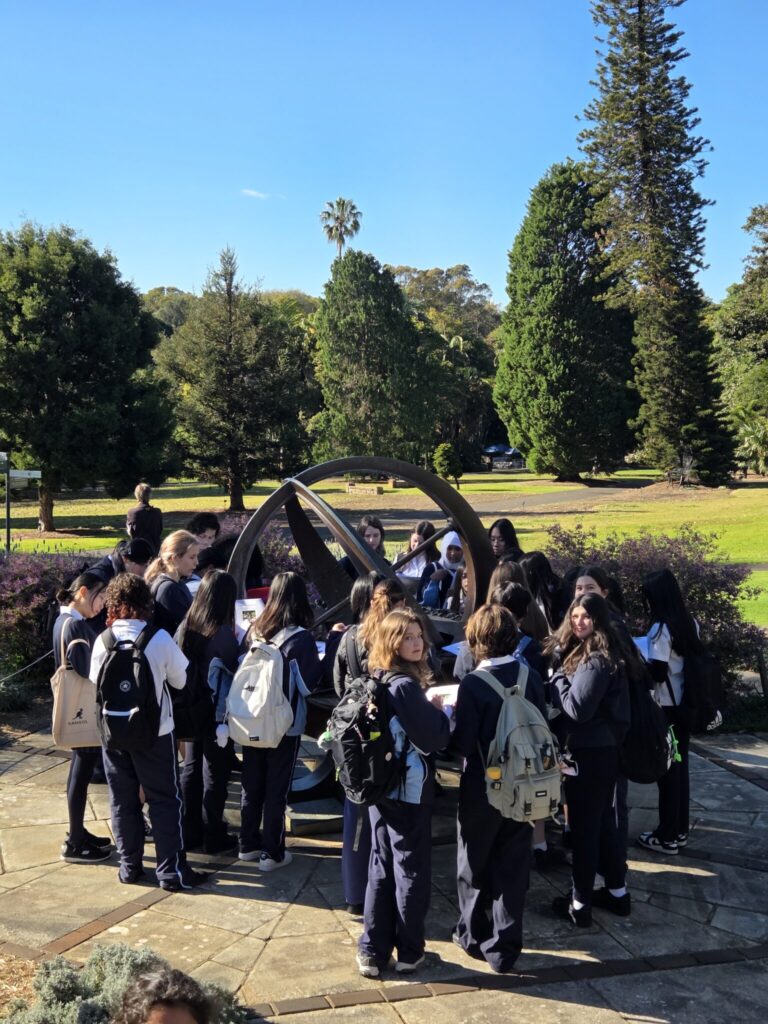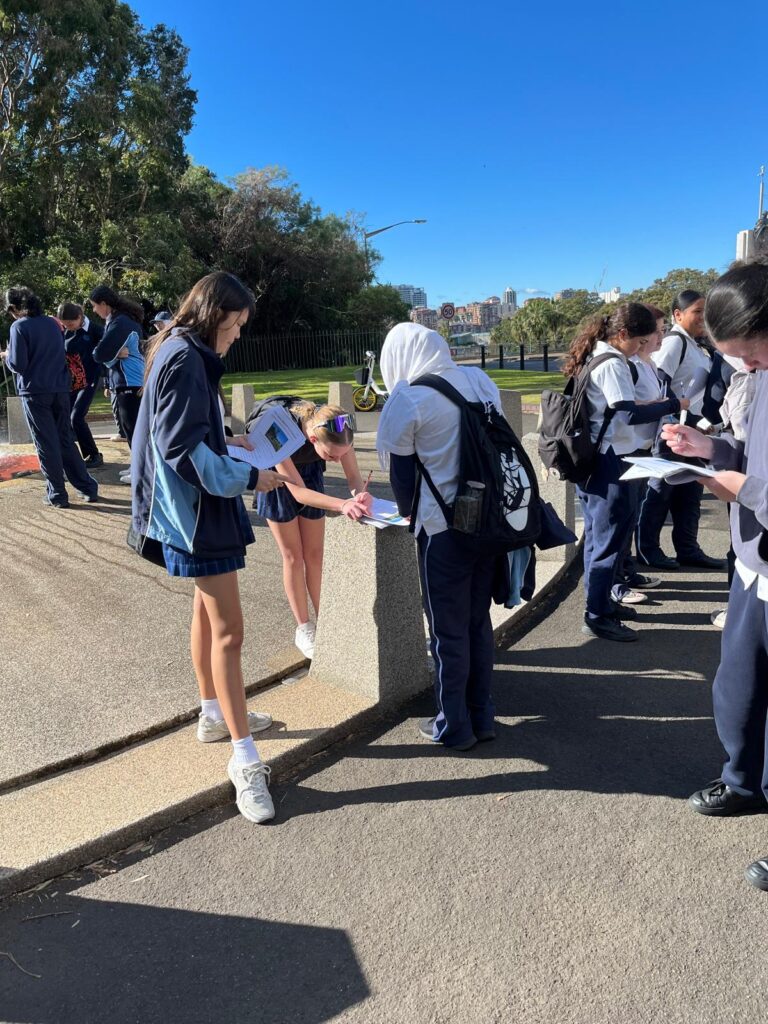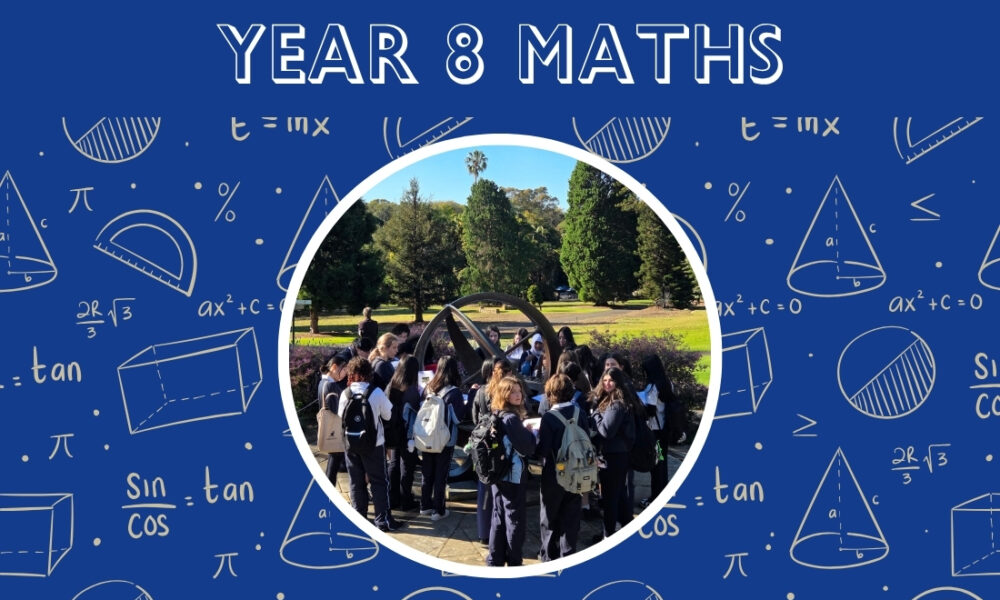
Year 8 Maths Excursion
Year 8 Maths Excursion to the Sydney Royal Botanic Garden
Did you know the fountain at the Woolloomooloo entrance to the Royal Botanic Garden holds 9378 litres of water? We didn’t either—until we had the chance to calculate it ourselves during our excursion, putting our classroom maths skills to the test (just be careful not to get your feet wet!).
On Monday 28th July, Year 8 visited the Sydney Royal Botanic Garden as part of their Stage 4 Mathematics studies. The excursion allowed students to explore real-life applications of Measurement, Statistics, Ratios, Rates, Area, and Volume.
Here is what our students had to say about their adventure at the Botanic Garden – where numbers met nature and we may have set a new school excursion step-count record.
On the excursion, we really enjoyed the stunning harbour views and exploring different parts of the garden. The surroundings were peaceful and beautiful, and having a relaxing picnic lunch with our friends made it even better. It was fun chatting with friends and spending time talking to the teachers in a more casual way. We loved walking around to the different activities and admiring all the colourful flowers. It was such a great day that gave us the chance to enjoy nature and spend time together outside of school.
During our visit to the garden, we used a lot of maths in practical ways to complete different activities. We created a tally chart to count which groups of people use the garden the most, then turned that data into a column graph to make it easier to analyse. We calculated the area of fallen leaves on the ground and even worked out the volume and capacity of a fountain. To determine if two sculptures were in proportion, we used ratios by comparing their height and length. We also used rates to calculate how fast water was flowing from the Morshead Fountain. To track our journey, we drew a travel graph showing our trip from school to the garden and back again.
An activity that everyone enjoyed was reading the sundial. Luckly it was a nice sunny day as sundials rely on the shadow cast by the sun to indicate the time. If there is no sun, there will be no shadow, and therefore, no way to read the time on a sundial. It was really interesting to see how all the maths we learn in class applies to real-life situations.
Written by 8E and 8M.

